July 2025
The Sky Tonight - July 2025
July continues the season of Makuru and with it continues the fantastic, cool weather. Ironically, this is the best and worst …
ExploreThe latest sunrise occurs in early July, as the Earth reaches aphelion on July 6th. Sunrise times will start to get earlier after this date. The Earth’s orbit is slightly elliptical, as all orbits are to some degree, and aphelion is the point when it is furthest away from the Sun in its orbit. The closest point, perihelion, is in early January.
There are five moon phases this month, with two last quarters, the first on the 2nd of July and the next on the 31st of July.
slender crescent Moon to the left of Mercury, dawn sky.
July 8
Mars above Venus, 0.5 degree conjunction, crescent Moon below.
July 12
Venus next to Regulus, brightest star in Leo.
July 22
Moon above Saturn, evening sky.
July 24
Moon below Jupiter, evening sky.
July 26
Mars next to Regulus, brightest star in Leo.
July 30
Venus is easily visible in the evening sky now. It will remain an evening object until the end of the year. On the evening of the 12th it will be in conjunction with Mars, with a thin crescent Moon underneath the two planets. An unimpressive Mars will be half a degree above the much brighter Venus. Mars heads downwards towards the horizon after this, and Venus upwards. Both planets make close passes to Regulus, the brightest star in the constellation of Leo the Lion later in the month, with Venus next to Regulus on the evening of the 22nd, and Mars passing Regulus on the 30th.
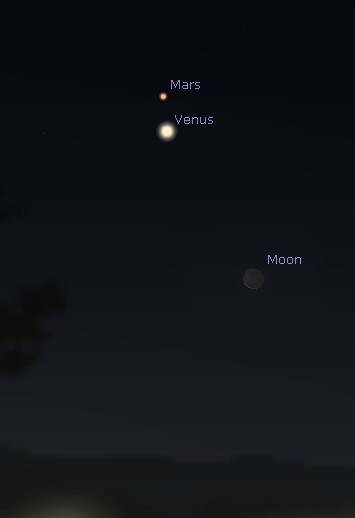
Look to the west-northwest about an hour after sunset to see the Mars-Venus conjunction on the 12th of July.
Saturn and Jupiter are visible most of the night now. They reach opposition next month, with Saturn rising opposite the Sun (as it sets) on the 2nd August). Jupiter is about 90 minutes behind Saturn. Saturn is outshining the stars around it in Capricornus, but if you are still unsure then the Moon will be above it on the 24th. There is no mistaking Jupiter, though, as it is brighter than any star in the sky – only Venus shines brighter than it.
Mercury will be visible in the dawn sky during the first two weeks of July. A thin crescent Moon will be to the left of it on the morning of the 8th of July.
Hercules is the fifth largest constellation in the sky. Named after the mythological Greek hero famous for his great strength, he may also represent the ancient Sumerian hero Gilgamesh. The constellation depicts a strong man kneeling on the head of Draco the Dragon. Although the constellation is in the northern sky as seen from Australia, it still rises far enough above the northern horizon to be easy to see.
A prominent feature of Hercules is the asterism known as the ‘Keystone’. An asterism is a pattern of stars that is not a constellation and is often a smaller part of a recognised constellation. The four stars that mark the lower body of the man form the same shape as a keystone in the top of a stone archway. The keystone holds the whole arch together and stops it from collapsing.
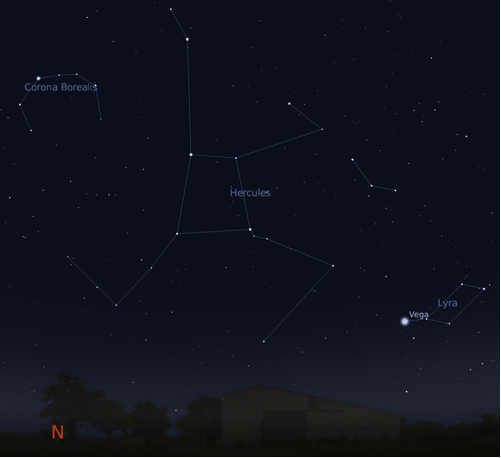
The constellation Hercules can be seen towards the north during winter in the southern hemisphere.
When it comes to globular clusters we are pretty spoilt for choice in the southern hemisphere: we have omega Centauri, 47 Tucanae, M22 and the Starfish cluster (NGC 6752 in Pavo). North of the equator it’s M13 at the top of the list.
M13 is a globular cluster that is large and bright enough to be seen with the unaided eye from a dark location. Estimated to be 25,200 light years away, it’s still relatively close for a globular cluster. It is found along one side of the ‘Keystone’ asterism in Hercules. In binoculars it looks like a round fuzzy patch, so don’t confuse it with a comet!
Globular clusters are large clusters of hundreds of thousands of stars that are probably left over bits from when the galaxies formed. Most of the stars in the cluster are very old. Because the clusters typically orbit around the outside of the galaxy they retain a round, globular shape, which is how they got their name. We can see around 120 globular clusters that belong to our galaxy from Earth, and we can see thousands around other large galaxies beyond

M13 is a large, bright globular cluster in Hercules.
Credit: N.A.Sharp, REU program/NOAO/AURA/NSF
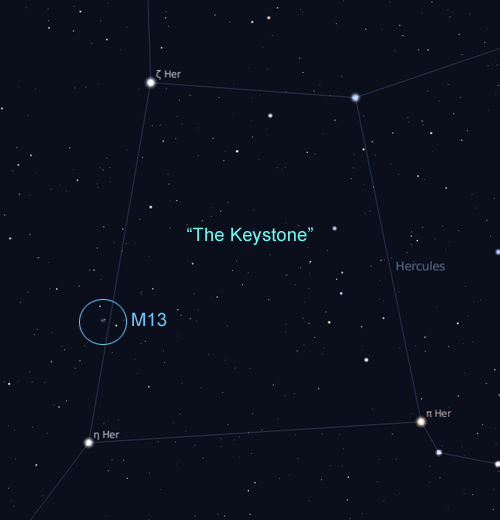
M13 is two-thirds of the way along one side of the Keystone of Hercules.
The Juno mission has been orbiting Jupiter since July 2016. It was scheduled to end this July, in 2021, but it is still travelling so well a decision was made in January to extend its mission to 2025. This is fantastic news to those space lovers and followers of the mission who have enjoyed the fantastically detailed images of Jupiter it has sent back each time it swings past the largest planet in our solar system. The strong magnetic field of Jupiter was expected to damage and fry the electronics inside the spacecraft long ago, but it’s proving to be very resilient even in the harsh conditions near Jupiter.
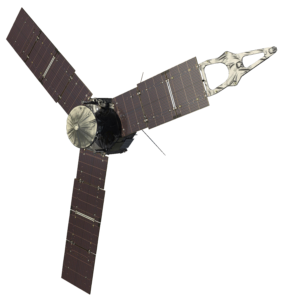
An artist’s impression of how the Juno spacecraft looks with the solar panels extended.
Credit: NASA
Juno’s solar panels are 8.9m long. They are the largest solar panels fitted to a space mission to another planet and need to be large to collect as much sunlight as possible. Jupiter is at the limit to where we can use solar panels for robotic missions, as sunlight spreads and becomes weaker in intensity the further it travels from the Sun.
The extended mission for Juno is not just for fun. It will provide important information for two missions that will launch in years to come. The first is the Jupiter Icy Moons Explorer (or JUICE) which is due to launch in 2022 and arrive at Jupiter in 2029. It will be the first mission to orbit a moon of another planet when it settles into orbit around Ganymede in 2032.
The second mission to launch will be the Europa Clipper in 2024. It should reach Jupiter around 2030 and will be dedicated to studying the ice moon Europa, the moon thought to have an ocean of water beneath its icy crust.
While we are waiting for JUICE and Europa Clipper to make their way to Jupiter, we should be prepared to be amazed by more jaw-dropping pictures of Jupiter’s Moons from Juno that haven’t been seen this close up for over 20 years. Keep up the good work, Juno!
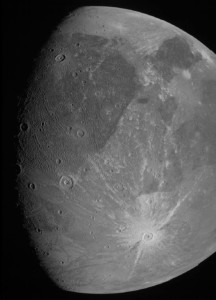
Juno’s first look at Ganymede, the largest Moon in the solar system, paving the way for the next mission to visit, known as JUICE.
Photo credit: NASA/JPL-Caltech/SwRI/MSSS
Upon clicking the "Book Now" or "Buy Gift Card" buttons a new window will open prompting contact information and payment details.